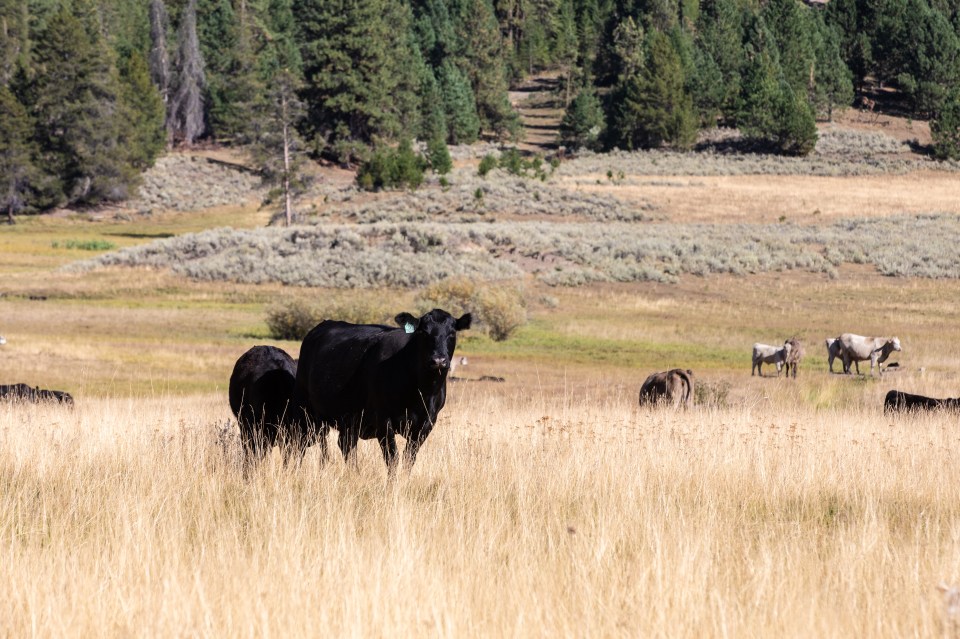Keep a proactive eye on cow body condition
When it rains, it pours. At least that’s what happens when a drought breaks, it seems. But if you’re in an area still in drought’s grip and heading into calving season, the “pour” you might get is more open cows.
That’s why it’s important to monitor body condition and provide the nutrition your cows need to succeed, according to Lee-Anne Walter, Ph.D., technical services nutritionist with Merck Animal Health.
The bottom line in any cow herd is this: You can’t sell a calf that’s never born, plus you may need to cull the open cow, increasing the cost of replacements.
Many problems can be alleviated by making sure cows in your herd have the body condition to be cycling 80 to 85 days after calving. This helps them conceive and maintain the pregnancy. “That’s going to be dependent on body condition,” Dr. Walter says. And body condition depends on nutritional status.

“The most important factor influencing pregnancy rate is body reserves at calving,” Dr. Walter says. As cows go through the winter and the last trimester of pregnancy, nutritional needs, especially energy, hit gestational highs. Hay or other stored feed won’t supply everything the cow needs.
“Unless we supplement, she’s going to lose body condition score just to maintain that pregnancy and prepare for lactation. Then, as you get into early lactation and breeding, we hit peak energy needs and again, we need to supplement that cow for her energy needs.”
Keeping your cows in an adequate body condition score of 5 or 6 is likely easier and less expensive than playing catch-up. According to the Merck Veterinary Manual, to move a cow one body condition score higher requires 100 pounds of tissue weight gain.
“That’s a significant amount of feed,” Dr. Walter observes. “You’re looking at probably 600 to 1,000 pounds of feed (hay and supplement) to gain 100 pounds of tissue weight.” If cows are in a body condition score of 4 or lower in the fall and drought has caused feed resources to be tight, “we’re going to have a bigger challenge come the spring in trying to get those cows bred.”
Herd health is important
According to Dr. Walter, when considering the interplay of drought management strategies and breeding productivity, don’t skimp on herd health.
“A herd health program includes a comprehensive vaccination program, regular scoring of cow body condition and a breeding soundness exam for bulls.” Additionally, when grazing resources are tight, attention to feeding strategy and finding hay or winter feed can be challenging. Body condition scores, feet and legs, and udders can impact culling decisions. Then check for pregnancy. “That’s an easy one. It’s definitely a culling opportunity, especially in years of drought.”
These evaluations help producers pick the best cows to keep as they enter the costly winter-feeding season. Visual observation and veterinary checks can be enhanced with purposeful decisions that are based on data.
Merck Animal Health’s portfolio of ALLFLEX® identification tools make it easy to identify animals. Use electronic ID tags and readers to collect accurate performance records on individual animals. This is highly useful in making precision culling decisions.
ALLFLEX Tissue Sampling Units for DNA profiling can also provide proactive information. The DNA tests can score bulls or replacement heifers for maternal and fertility traits, adding more insight to culling decisions.
The percentage of cows in the herd that breed back and achieve production of six calves, aka stayability, is one of the most critical profit drivers in a cow-calf operation. This trait is influenced by management, environment, nutrition and genetics.
When drought cuts forage availability — reducing conception rates, limiting calving rates, spiking culling rates and driving up feed cost — deciding which cows to keep in the short term can result in a lasting impact on long-term assets. While drought weighs a heavy financial and emotional cost on producers, they fortunately have more tools for making culling decisions than they have ever had before.
Find more content for your beef operation.
